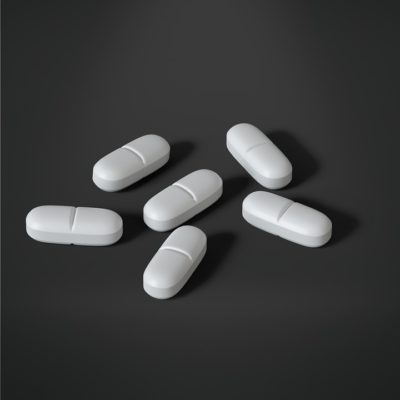
Any administered potassium – oral or Intravenous – gets quickly distributed not just in circulating blood, but also across other body fluids & within trillions of body cells. So when you note that serum/blood concentration is low, the actual “Total-body potassium deficit” is a much higher number.
Here’s a simple trick to decide how much Potassium Chloride (KCL) to give in hypokalemia:
STEP 1: Decide goal blood Potassium level
Usually, 4.0 meq/L is a good goal to aim for, In renal failure, I lower the goal to 3.5-3.6 to reduce hyperkalemia risk
STEP 2: Calculate TOTAL potassium chloride (KCL) needed to satisfy the Total-body potassium deficit
Here’s an easy-peasy & practical rule of thumb to remember to calculate the Total KCL dose, either oral or IV:
To increase blood potassium concentration from 2 mEq/L to 3 mEq/L, an adult patient roughly needs a total of 200 mEq of KCL ( or needs 20 mEq KCL replacement dose for 0.1 mEq/L desired increment in potassium level)
And, to increase blood potassium concentration from 3 mEq/L to 4 mEq/L, an adult patient roughly needs an additional 100 mEq of KCL ( or needs 10 mEq KCL replacement for every 0.1 mEq/L desired increment in potassium level)
Examples:
- K = 3.2 mEq/L: For a goal level of 4.0 mEq/L, we need to increase levels by 4.0 minus 3.2 = 0.8 mEq/L. Since the starting level is between 3 and 4, each 0.1 increment needs a 10 mEq dose. Hence, the Total Body Deficit would be 8 increments X 10 mEq = 80 mEq KCL
- K = 2.8 mEq/L: For a goal level of 4.0 mEq/L, we need to increase levels by 4 minus 2.8 =1.2 mEq/L. To get from 2.8 to 3.0 would mean an increase of 0.2 or 2 increments of 0.1 (So as per our rule of thumb, Body Deficit = 2 increments X 20 mEq = 40 mEq to get from 2.8 to 3.0) and to get from 3.0 to 4.0 would mean an increase by 1.0 or 10 increments of 0.1 ( So Body Deficit = 10 increments X 10 mEq = 100 mEq). Thus the Total body deficit for this patient is roughly 40 + 100 = 140 mEq.
STEP 3: Decide on Oral (PO) v/s Intravenous (IV) administration:
I prefer oral KCl, but IV KCL is done if the patient is strictly NPO, is nauseous, needs an urgent fix due to arrhythmia risk, or is on an Insulin drip (which tends to reduce potassium).
STEP 4: Decide dosing plan & frequency:
If giving orally, limit KCL doses to 40 mEq maximum at a time, since KCL is very irritating to the GI tract and and causes nausea. The max I have done is 60 mEq in younger people. Also, since KCL tend to be pills, they may be difficult for people with swallowing issues.
In our example # 2 above, to target a total dose 140 mEq, I would do 40 mEq KCL PO every 6 hours X 3 doses, then 20 mEq KCL 6-8 hours later. Recheck levels few hours after last dose is done!
💡 Oral KCL on a empty stomach is a bad idea (puke !!) Always give with a snack or meal.
If Giving IV, it is 10 mEq an hour max via a peripheral vein or 20 mEq an hour max via a central vein line using a controlled infusion pump. It’s common knowledge that you never order an “IV push” for KCL – high risk of stopping the heart!
Don’t miss these fun posts! Subscribe via email 📩 | |
